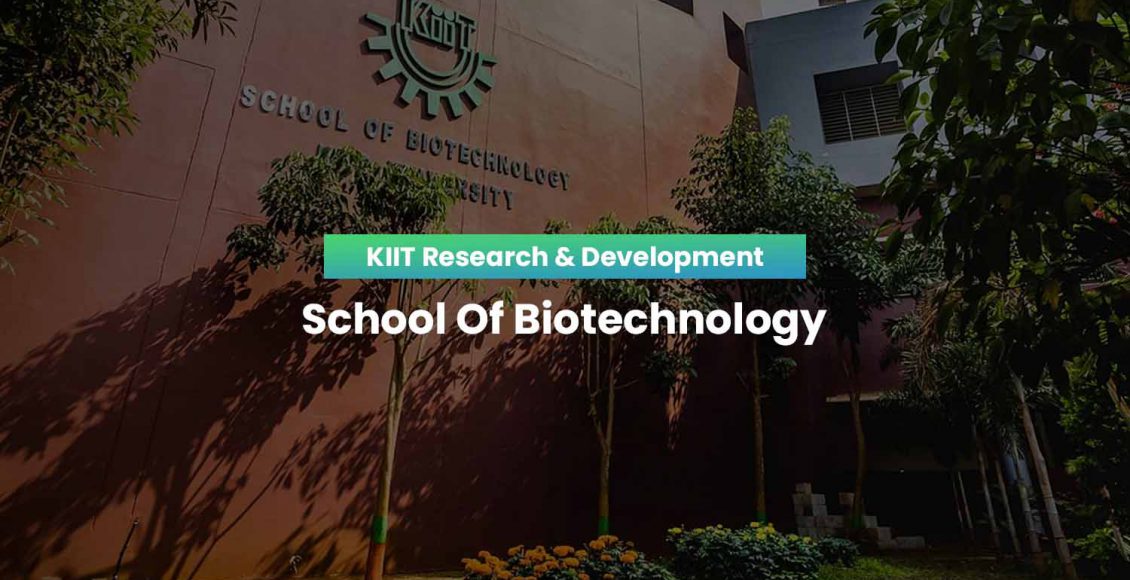School of Biotechnology (Apr – May 2022)
Awards and Distinctions Received
Awards and distinctions received:
Name of the Faculty: Gargi Dey
Title of the Award: Best Mini Review Award
Award Received: FEDERATION OF EUROPEAN MICROBIOLOGICAL SOCIETIES (FEMS) Microbiology Letters Article Award 2021
Place Cambridge, CB1 2LA, United Kingdom
About the Award (limited to 100 words):
To recognise the importance of collaborative work that is being carried out in both multidisciplinary research and the knowledge development process, FEMS and OUP have teamed up to offer an award to the Best Mini Review published by FEMS Microbiology Letters each year. Gargi Dey is the winner of the best 2021 Mini Review award in the journal FEMS Microbiology Letters. The Editor-in-Chiefs and Section Editors picked as their favourite Mini Review: Probiotics-targeting New Milestones from Gut Health to Mental Health. They really liked the clear overview it gives on relationships between probiotics and a healthy body and mind.

Conventional probiotic food research was primarily focused on their benefits for gut health. Recently with the confirmation that the gut microbiota has a bidirectional connection with the brain, it is being proposed that modification of the microbiota can possibly extirpate neurological diseases. In this context, this review discusses the evidences collected on the anxiolytic and antidepressant effects of probiotics, especially during the periodafter 2015. The formulation of new psychobiotic-based therapeutics is in the spotlight. It is expected that in near future, biological effect of probiotics on neurological conditions will open up an entirely new avenue for personalized medication and healthcare in mental health.
Grant or Project Awarded (Both Sponsored Research and Consultancy)
Title of the Sanctioned Project: Decrypting the Functional Role of the Human Erythrocyte HSP70 Chaperones (HSPA1 And HSPA8) in Intraerythrocytic Development of Plasmodium Falciparum.
Principal Investigator’s Name: Dr K. Sony Reddy
Co-Principal Investigator’s Name: Dr Selvakumar Elangovan
Name of Funding Agency: Science and Engineering Research Board, Department of Science and Technology, Govt. of India
Sanctioned Amount of Project: Rs. 38 Lakh for 3 years


We believe that the functionality of host erythrocyte HSP70 proteins (predominantly HSPA1 and HSPA8) and associated molecules present in the host erythrocyte cytosol get hijacked by the PfHSP40 proteins, and would be utilized for folding of the exported parasite proteins or remodeling of the host erythrocyte cytoskeleton. This hypothesis, if proven true, will provide concrete evidence of P. falciparum parasites using the host erythrocyte folding machinery for its survival. The results will reveal a new avenue of host-pathogen interaction that exists between the intraerythrocytic parasite and the host erythrocyte.
Ph.D. Degree Awarded (Provisional):
Student’s Name: Dr. Subhajit Chatterjee
Supervisor’s Name: Dr. Chanakya Nath Kundu, School of Biotechnology
Thesis Title: To Study the Role of Cell Adhesion Molecule NECTIN-4 (A Pvrl-4 Encoded Gene) in Cancer Progression and Angiogenesis

Abstract:
NECTIN-4 possesses three different domains and it is predicted that they have different roles in cancer but the structure-function relationship was still unknown. Using 5-Fluouracil-resistant cervical cancer stem cells (PEMT-5FU-R-MC) and different NECTIN-4 domain-specific constructs, different domains of NECTIN-4 were over-expressed in PEMT-5FU-R-MC cells. Different biochemical assays were used to delineate the function of each domain of NECTIN-4 in cancer and their regulation by nano-formulated quinacrine. In the second part of this thesis, systematic studies were performed to illustrate the detailed molecular signalling of NECTIN-4 mediated cancer angiogenesis. In addition, probable strategies were provided to target NECTIN-4 mediated cancer angiogenesis.
Journal paper:
1. Sahu, W., Bai, T., Panda, P. K., Mazumder, A., Das, A., Ojha, D. K., Verma, S. K., Elangovan, S., and Reddy, K. S. (2022), Plasmodium Falciparum HSP40 Protein Ecijp Traffics to the Erythrocyte Cytoskeleton and Interacts with the Human HSP70 Chaperone HSPA1, FEBS Letters, Vol. 596, No. 1, pp. 95–111, DOI: 10.1002/1873-3468.14255 (IF: 4.124).
Abstract
Renovation of host erythrocytes is vital for pathogenesis by Plasmodium falciparum. These changes are mediated by parasite proteins that translocate beyond the parasitophorous vacuolar membrane in an unfolded state, suggesting that protein folding by chaperones is imperative for the functionality of exported proteins. We report a type-IV P. falciparum HSP40 protein- eCiJp, that traffics to the host erythrocyte. eCiJp localizes to the cytoplasmic side of the J-dots, and binds to the host erythrocyte cytoskeleton. The eCiJp protein interacts with the human HSP70 chaperone, HsHSPA1, and it is expected that it might assist in the folding of the parasite proteins andremodeling of the erythrocyte cytoskeletal proteins.
2. Radharani, N.N.V., Yadav, A.S., Nimma, R., Kumar, T.V.S., Bulbule, A., Chanukuppa, V., Kumar, D., Patnaik, S., Rapole, S., and Kundu, G.C. (2022), Tumor-associated Macrophage Derived IL-6 Enriches Cancer Stem Cell Population and Promotes Breast Tumor Progression via Stat-3 Pathway, Cancer Cell Int. Vol.22, No. 1, p. 122, DOI: 10.1186/s12935-022-02527-9 (IF: 5.15).
Abstract
Cancer stem cells (CSCs) niche comprises various stromal cell types including Tumor-associated macrophages (TAMs). We observedtaht Interleukin-6 (IL-6) is one of the up-regulated genes expressed in activated macrophages. Also, TAMs produce high levels of IL-6 and breast cancer cell derived factors induce IL-6 production in activated macrophages via p38- MAPK pathway. Further, tumor activated macrophages induce enrichment of CSCs and expression of CSC specific transcription factors such as Sox-2, Oct-3/4 and Nanog in breast cancer cells. These findings provide evidence that TAM derived IL-6 plays a major role in CSC enrichment and tumor progression in breast cancer and IL-6.
3. Pawara, R., Ahmad, I., Nayak, D., Belamkar, S., Surana, S., Kundu, C.N., Patil, C. and Patel, H. (2022), Design and Synthesis of the Novel, Selective WZ4002 Analogue as EGFR-L858R/T790M Tyrosine Kinase Inhibitors for Targeted Drug TherapyiIn Non-Small-Cell Lung Cancer (NSCLC), Journal of Molecular Structure, Vol. 1254, p.132313, DOI: 10.1016/j.molstruc.2021.132313 (IF 3.196).
Abstract
To conquer the drug-resistance of first-generation EGFR (epidermal growth factor receptor) kinase inhibitors and second-generation inhibitors’ non-selective toxicities in Non-Small Cell Lung Cancer (NSCLC) patients, a series of WZ4002 derivatives (6–46) were discovered as novel double mutant EGFR-L858R/T790M TK inhibitors. Among the synthesized compounds, representative compounds 8 and 38 displayed significant anti-proliferative activity on the Gefitinib-resistant cell line NCI-H1975. Also, these compounds exhibited moderate anti-proliferative activity against the A549 cell, suggesting their improved selectivity over the mutant EGFR-L858R/T790M. These results demonstrate that compounds 8 and 38 would be promising lead compound-targeting double mutant EGFR-L858R/T790M TK.
4. Sethy, C. and Kundu and C.N. (2022), PARP Inhibitor BMN-673 Induced Apoptosis by Trapping PARP-1 and Inhibiting Base Excision Repair via Modulation of Pol-Β in Chromatin Of Breast Cancer Cells, Toxicology and Applied Pharmacology, Vol. 436, p.115860, DOI: 10.1016/j.taap.2021.115860 (IF 4.219).
Abstract
PARP inhibitors confer cytotoxicity in cancer cells both by catalytic inhibition and trapping of PARP-1 at the DNA damage site. Here, we have precisely evaluated the mechanism of PARP trapping mediated anti-cancer action of Quinacrine (QC), BMN-673 and their combination (QC + BMN-673) in breast cancer cells. We introduced a strategy to measure the cellular PARP trapping potentiality of BMN-673 in QC pretreated cells using a fluorescence-based assay system. Our data suggested that the QC + BMN-673 augmented breast cancer cell death by pol-β mediated repair inhibition primarily through trapping of PARP-1 besides PARP-1 catalytic inhibition.
5. Dash, S.R. and Kundu, C.N. (2022), Photothermal Therapy: A New Approach to Eradicate Cancer, Current Nanoscience, Vol. 18, No. 1, pp.31–47, DOI: 10.2174/1573413717666210301112058 (IF 1.824).
Abstract
The use of hyperthermal temperature to treat solid cancers is known as oncological thermal ablation. Thermal ablation is studied as a therapeutic strategy for most cancers and can be used in the control of local and metastatic diseases in addition to traditional anticancer therapies. The present review summarizes PTT’s functional properties, NIR penetration ability, DNA repair, cellular signaling, and immune system modulation effect of hyperthermia. The benefits of using different types of nanomaterials in PTT applications are further explored here. In addition, the problems associated with the use of nanomaterials in PTT applications are addressed in this article.
6. Panda, S., Nanda, A., Sahu, N., Ojha, D.K., Pradhan, B., Rai, A., Suryawanshi, A.R., Banavali, N,. and Nayak, S. (2022), SufBIntein Splicing in Mycobacterium Tuberculosis Is Influenced by Two Remote Conserved N-ExteinHistidines, Bioscience Reports, Vol. 42, Issue No. 3, pp. 1–18, DOI: 10.1042/BSR20212207 (IF 3.84).
Abstract
Inteins are auto-processing domains that implement a multistep biochemical reaction termed protein splicing. We report the kinetic study of splicing and cleavage reaction in [Fe–S] cluster assemblyproteinSufBfromMycobacteriumtuberculosis(Mtu). Sequence analysis identified two conserved histidines in the N-extein region; His248 and His215. Structural analysis and molecular dynamics (MD) simulations suggested that MtuSufB displays a unique mechanism where two remote histidines work concurrently to facilitate N-terminal cleavagereaction.Developmentofinteinsasbiotechnological tools or as pathogen-specific novel antimicrobial targets requires a more complete understanding of such unexpected roles of conserved extein residues in proteinsplicing.
7. Dey, G., Ghosh, A. and Tangirala, R. (2022), Technological Convergence of Preventive Nutrition with Non-thermal Processing, Journal of Food Processing & Preservation, DOI: https://doi.org/10.1111/jfpp.16508, (IF: 2.3).
Abstract
The food industry is rapidly heading toward a “technological convergence” with the goal of establishing highly efficient processing technologies for safe, shelf-stable functional products. In this review, we evaluated the utility and efficiency of various non-thermal processing technologies (cold plasma, ultra-sonication, high pressure, pulsed electric field, pulsed light processing) with respect to their capabilities to retain phytonutrient functionality and antioxidant potential in processed foods. The review also discusses existing gaps in current non-thermal processing techniques and explores potential improvements necessary to foster reliable next-generation processing technologies.
8. Chatterjee, M., Maniraj, J. Y., Karthik, R. K., Chowdhary, G., Sreevathsa, R. and Rao, U. (2022), Amenability of Marucavitrata (Lepidoptera: Crambidae) to Gene Silencing through Exogenous Administration and Host-Delivered Dsrnain Pigeonpea(Cajanus cajan L.), Physiology and Molecular Biology of Plants, Vol. 28, No. 01, pp. 189–202, DOI: 10.1007/s12298-022-01133-3 (IF: 2.4).
Abstract
Insect pests are one of the major biotic stresses limiting yield in commercially important crops. The lepidopteran pod borer, Marucavitrata, causes significant economic losses in legumes including pigeonpea. RNAi in M. vitrata through exogenous administration of dsRNA with sequence specificity to three functionally important genes, Alpha-amylase (α-amylase), Chymotrypsin-like serine protease (CTLP) and Tropomyosin (TPM) into the larval haemolymph and their host-delivered RNAi in pigeonpea. A significant decline in the expression of selected genes was observed. This study provided corroborative proof for the possibility of gene silencing in M. vitrata.
9. Roy, P.C., Chaturvedi, S., Samanta, I., and Chowdhary, G. (2021), Effect of Abiotic Stress n Polyamine Oxidase Activities in Rice, International Journal of Botany Studies, Vol. 6, No.06, pp. 445–449, DOI: https://www.botanyjournals.com/archives/2021/vol6/issue6/6-5-307 (IF: 0.2).
Abstract
Polyamines are small aliphatic amines present in plants that help in abiotic stress acclimation. The cellular concentration of polyamines is maintained by a delicate balance between their synthesis and degradation. The principal enzyme responsible for polyamine degradation is polyamine oxidases. Polyamine oxidases have been reported from multiple plant species.However, their behavior in response to abiotic stresses remains obscure. In this paper, we have investigated the polyamine oxidase activity in model plant rice (Oryza sativa) in response to various abiotic stresses, namely, salinity, dehydration, cold, and heat stress.
10. Panigrahi, B., Singh, R.K., Suryakant,U., Mishra, S.,Potnis, A., Jena., A., Kerry, G., Rajaram, H., Ghosh, S. K., and Mandal,D. (2022), Cyclic Peptides Nanospheres: A ‘2-In-1’ Self-Assembled Delivery System for Targeting Nucleus and Cytoplasm, Eur. J. Pharm. Sci, Vol. 171, pp. 106125, DOI: https://doi.org/10.1016/j.ejps.2022.106125 (IF: 4.3).
Abstract
Herein, self-assembled peptide nanospheres have been generated from L,L-cyclic peptides using hydrophobic (Trp), positively charged (Arg) and cysteine (Cys) amino acid residues and demonstrated as vehicles for intracellular delivery of VEGF siRNA and VEGF antisense oligonucleotide. Formation of peptide nanostructures is confirmed by HR-TEM, AFM, SEM and DLS analysis. Possible mechanism of self-assembly of the cyclic peptides and their binding with macromolecules are demonstrated by in-silico analysis. Flow cytometry and confocal microscopy results confirm the efficiency of the new biomaterials for the delivery of macromolecules.
Conference Paper:
- Early Peroxisome Targeted Polyamine Oxidase from Oryza Sativa Mediating Abiotic Stress Tolerance via a Feedback Loop, Presented in Realigning Indian Agriculture for Sustainable Futurein 5F Conference, 10-12th March, Bhubaneswar, India, Pages 99.
Abstract
Polyamines (PA) are low molecular weight aliphatic amines, present in all eukaryotic and prokaryotic organisms. They play an essential role in cell proliferation, growth as well as mitigation of abiotic stress. Polyamine oxidases are flavoproteins that catalyze the degradation of polyamines like spermidine to form putrescine along with H2O2 and NH3. We have cloned a PAO from Oryza sativa which demonstrated early peroxisomal targeting, upregulation by various abiotic stresses making it a suitable candidate for crop resilience in response to harsh abiotic stress conditions.
- Tarafdar, S., Reumann, S., and Chowdhary, G.(2022), Role of Acid Phosphatase in Abiotic Stress Tolerance in SolanumLycopersicum,Presented in Realigning Indian Agriculture for sustainable futurein 5F Conference, 10-12th March, Bhubaneswar, India, pp. 97–98
Abstract
Phosphorous isa crucial mineral for the life of plants. Purple acid phosphatases (PAPs) are primarily linked with the remobilization of phosphorous from the soil within plants by hydrolysing compounds of organic phosphorous, otherwise there is a lack of availability of phosphorous in such compounds for assimilation. Solanumlycopersicum (tomato), which plays a significant role in human nutrition and is an economically important vegetable crop, is sensitive to various types of biotic and abiotic stresses. We have cloned a gene for PAP from tomato which was found to be localized in the peroxisome. The expression analysis of the same is underway.


